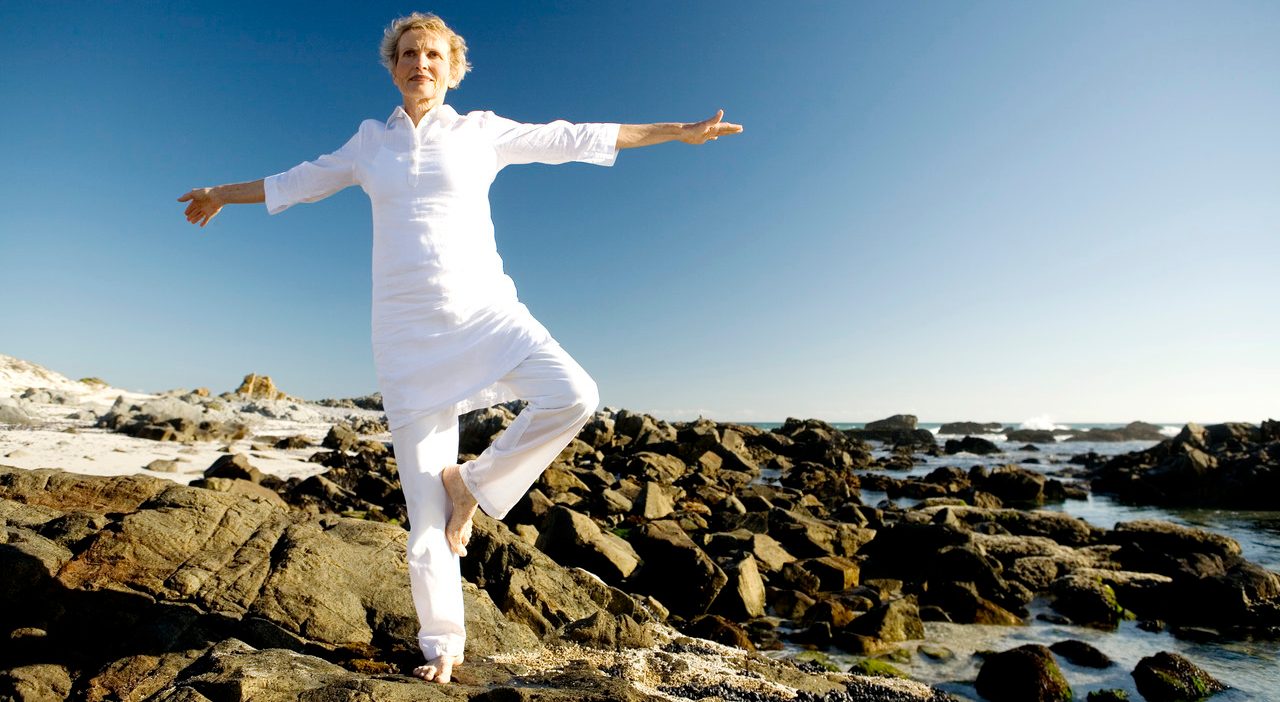Do the Stork

Improve your balance and get early signs of health problems.
The “stork” is a classic yoga move — you stand on one leg with your other leg pressed against your calf or thigh. When storks and flamingos (and even chickens) do this, we see only one leg, the other tucked under their feathers. The pose promotes mindfulness as you concentrate, helps you improve your balance, and may alert you to issues that could increase your chance of a hip fracture or stroke.
Do you have an uneven gait? Many people find that the stork is easier to do on one side than the other. If one leg is much stronger, you may be favoring it when you walk, which could be important if you are developing back or leg pains.
Balance tends to decline with age, especially after age 60. When elderly people fall, they are more likely to hurt their heads or fracture a hip, and may be demoralized if they lose their independence even for a limited time. You can prevent that by “fall-proofing” your home. The one-leg standing test could provide a needed push. In one study of 351 women ages 69 to 79, researchers asked participants to stand on one leg for up to 30 seconds with their eyes open. The chance of a hip fracture dropped by 5 percent for every second they could stand on one leg.
If it’s a struggle to balance on either side for at least 20 seconds, you might consider asking a doctor to evaluate your risk of stroke. According to research reported in the American Heart Association’s journal Stroke, people who couldn’t pass this test were more likely to have damage to small blood vessels in the brain even if they had no other symptoms.
The researchers asked 841 women and 546 men, who on average were 67, to stand on one leg with their eyes open for up to 60 seconds. Each participant tried twice; the better of the two times was used in the analysis. The team then gave each participant a brain MRI to see signs of small blood vessel disease.
It turned out that about a third of participants who had at least two negative signs — two “microbleeds” or two “lacunar infarctions” — had trouble balancing for 20 seconds. Around 15 percent of people with only one lacunar infarction or microbleed had trouble balancing that long. Short one-legged standing time was also linked to lower scores on a cognitive test.
Before you balance on one leg, immediately keel over, and panic, you should know that the interpretation of such MRI results isn’t obvious. For example, the link between microbleeds and subsequent stroke isn’t yet proven and needs more study. Many elderly people who live independently will show signs of a microbleed if tested. It’s also not clear whether microbleeds directly interfere with brain function, as you might guess from the lower scores on cognitive tests. Similarly, the correct interpretation of a lacunar infarction result on a MRI isn’t crystal clear.
If you are concerned about your risk of stroke, beyond talking to your doctor, adopt preventive measures that are generally good for health. Quit smoking, lose extra weight, treat diabetes and irregular heartbeats, exercise more, and take recommended steps to lower your blood pressure. You might also consider taking a daily baby aspirin if you’re over age 65 and drinking a standard (5-ounce) glass of wine, preferably red, at dinner,
Updated:
April 07, 2020
Reviewed By:
Janet O’Dell, RN